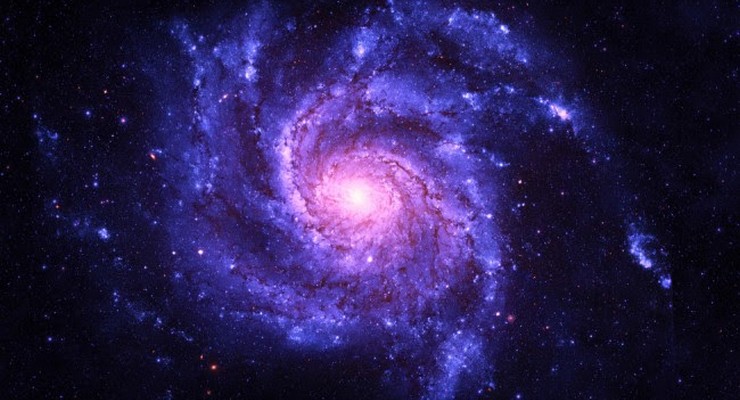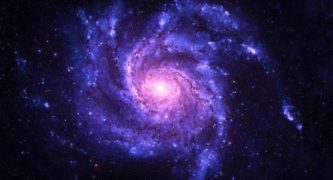
The work of a group of scientists at Jet Propulsion Laboratory in Pasadena is changing opinions on where life in the universe is most likely to be found.
The habitable zone is the region around a star where liquid water could exist on the surface of a planet. Earth is the primary example and various astronomers have suggested that planets like this around other stars would be good targets for the search of extraterrestrial life.
In recent years, according to an article appearing in Discover Magazine, a number of interesting candidates have emerged from planet-hunting surveys.
But there is another set of factors that also determine the likelihood of life and these have been less well investigated. Soviet astronomers Leonid Marochnik and Lev Mukhin in 1983 suggested that technological civilizations might be most likely to emerge in a “belt of life” around the center of our galaxy.
Other astronomers have since toyed with the idea of a “galactic habitable zone” where conditions are ripe for the emergence of life. This region is essentially a donut-shaped zone around the center of the galaxy, where life appears more likely to emerge. But just how this likelihood changes over time has yet to be explored.
But now, JPL’s Jonathan Jiang, working with a group of colleagues, has created a three-dimensional model of the galaxy that simulates the likelihood that life might emerge on Earth-like planets and suggests regions of the galaxy where life seems most likely to have arisen.
The model shows how this likelihood depends on factors such as how quickly organic molecules emerge from a prebiotic soup, how quickly evolution can transform them into intelligent life, and, most significantly, the possibility that intelligent life eventually destroys itself in an existential act of annihilation. So, as well as suggesting where life is most likely, the model also suggests when it is most likely to arise.
“The exact number of the intelligent life estimated here is not the focus of our work; rather, it is instead the development of a statistical, comprehensive galactic picture tracing the potential growth propensity of intelligent life over a course of ~20 billion years,” says Jiang and fellow scientists Xiang Cai, Kristen A. Fahy and Yuk L. Yung.
The team began by creating a model of the galaxy that reproduces the astrophysical characteristics of the Milky Way, such as its distribution of stars and Earth-like planets as well as the rate at which stars die in cataclysmic supernova explosions.
Supernovas play a crucial role because they act like sterilization events, destroying atmospheres, breaking down complex organic molecules, and killing off life forms.
But after a supernova, life can emerge again in habitable regions. In some parts of the galaxy, this creates a curious tension between the supernova rate and the probability of extraterrestrial intelligence.
The team assumes that where conditions allow, life will emerge from inorganic processes, a phenomenon known as abiogenesis. They then model two possibilities: that this always occurs — in other words, its probability is 1 — or that it rarely occurs in which case the probability is more like 10^-6 per million years (based on the fact that we know it has occurred at least once on Earth).
Next, the team simulated how long it might take for life to emerge after abiogenesis has occurred. On Earth, this took around 3 billion years. So the researchers use the model to study the cases when life emerges after 1, 3 or 5 billion years.
And finally, they include the possibility that intelligent civilizations destroy themselves with a probability ranging from 0 to 0.99.
From all these possibilities the model predicts that intelligent life is most likely to emerge after about 8 billion years in a donut-shaped region roughly 13,000 light-years from the center of the Milky Way.
At later times and greater distances, the probability of life decreases significantly. “Our results suggest that the quantity of intelligent life does not always increase with time,” they say.
Some factors turn out to have a bigger impact on the occurrence of life. “We found [the probability of annihilation] to be the most influential parameter determining the quantity and age of galactic intelligent life,” say Jiang and his colleagues. “Our results show that the level of extraterrestrial intelligence will eventually reach an equilibrium between birth and death of intelligent life at approximately 20 Gyrs.”
By contrast, the probability of abiogenesis has little impact on the quantity of intelligent life, which is consistent with the possibility of life being common throughout the universe.
There are some curious outcomes, too. The galaxy is roughly 13 billion years old and Earth sits some 25,000 light-years from the center. It is the only known example of a habitable planet that hosts intelligent life and yet Earth does not sit within the region or time frame when the model predicts life to be most likely.
That has important implications for the search for extraterrestrial intelligence. It suggests, for a start, that astrobiologists should focus their searches towards the center of the galaxy.
But those looking for life elsewhere shouldn’t get their hopes up just yet. The teams say their simulation suggests that most intelligent life in our galaxy right now must be young. This would make them hard to spot or communicate with and also explain why they have not already been observed.














 0 comments
0 comments


